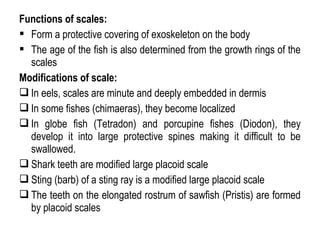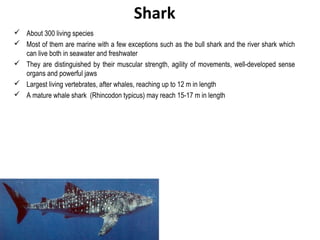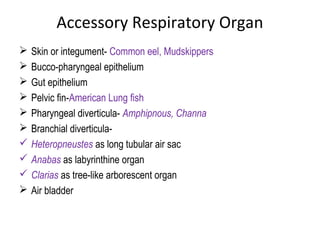The document provides an extensive overview of fish anatomy, classification, and unique features, particularly focusing on types of fins, scales, and various classes of fish including cartilaginous and bony fishes. It describes the functionalities of fins, scales, and the digestive and reproductive systems of sharks and rays, as well as their economic importance. Additionally, it outlines the classifications of different fish orders and the evolutionary adaptations among fish groups.
















































































